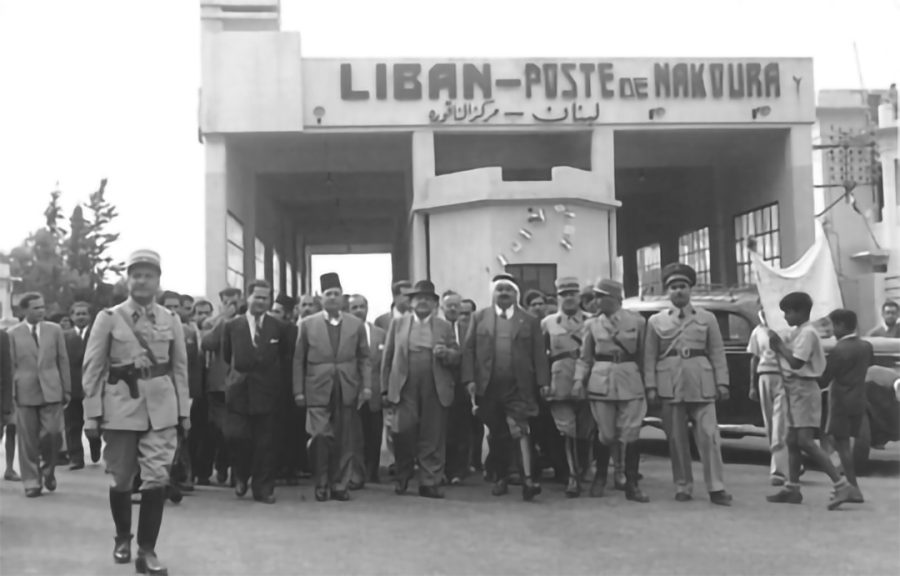
In light of the war that erupted in Gaza on October 7, analysts frequently draw upon the history of the Israeli-Palestinian conflict to frame current events in their historical context. Within this framework, the Cairo Agreement is a frequently cited reference, especially concerning Lebanon's connections with the Palestinian resistance.
Le Monde's November 5, 1969 issue highlighted that "the Cairo Agreement entails, in the long run, the country's integration into the war against Israel." This agreement is also cited as the source of all Lebanese trouble and is notably one of the main factors that triggered the 1975 war that shook the country for more than 15 years.
Memorandum
On November 3, 1969, Commander-in-Chief of the Lebanese Army General Emile Boustany and President of the Palestine Liberation Organization (PLO) Yasser Arafat signed an agreement in Cairo following seven hours of negotiations. The agreement in question granted the Palestinian resistance the right to exist in Lebanon.
According to the text, the PLO's fedayeen* (guerrillas) were permitted to settle in the Arkoub region, at the southern border of Lebanon, known as "Fatah-land," which was turned into a front against the State of Israel.
The agreement was reached by both the Lebanese and Palestinian delegations in the presence of the Minister of Foreign Affairs, Mahmoud Riad, and the Minister of War, General Mohamed Fawzi, representing the Egyptian side.
[gallery link="none" size="large" ids="205251,205252"]
The outcome yielded principles and measures meant to regulate Palestinian presence in Lebanon, all within the framework of "respecting Lebanon's security and sovereignty." The first chapter, titled "The Palestinian Presence," recognized the rights of Palestinians residing in Lebanon to work, reside and circulate — a set of measures that were not implemented.
In a second chapter dedicated to "The Action of the Resistance" or fedayeen, the text stipulates the establishment of units under the Palestinian Armed Struggle Command (PASC) within the camps. These units were required to maintain good relations with Lebanese authorities and were tasked with ensuring "the distribution and limitation of weapons in the camps, respecting Lebanon's security and the interests of the Palestinian Revolution." It was also agreed that "Lebanese civilian and military authorities would continue to fully exercise their authority and responsibilities throughout Lebanese territory and in all circumstances."
As reality attests, the points concerning Lebanon's sovereignty remained unfulfilled. Two days after the agreement was signed, Bernadette Marchal wrote in Le Monde on November 5, 1969, that it would be "increasingly difficult in the future to reconcile the country's sovereignty with the interests of the guerrilla." Marchal also pointed out that Lebanon had "irreversibly entered a new phase of its history," in what seemed like a prophetic assertion.
Hot Takes
Immediate reactions didn't fail to stir the Lebanese scene, already torn by divisions regarding the Palestinian presence. While Sunni political factions within the Lebanese government were in favor of endorsing the Palestinian resistance, seeing themselves represented in this Sunni guerrilla movement, there was no such sentiment in the Christian community. Raymond Edde, leader of the Lebanese National Bloc, reacted on the very evening of the signing, requesting an audience with the President, Charles Helou. He unequivocally argued that the secret nature of the Cairo Agreement violated the Constitution, insisting on consulting Parliament regarding the presence of fedayeen in Lebanon.
It is important to note that the Lebanese Parliament ratified the Cairo Agreement without receiving its text. While the Lebanese Annahar newspaper published a "complete" version in April 1970, then-Minister of Information Osman Dana did not comment on the document's authenticity. Furthermore, an informed Palestinian source confirmed to AFP in Beirut that the mentioned version was "accurate." The last clause of the agreement states, "This agreement will remain confidential and can only be disclosed by the military commands of both parties."
The Cairo Agreement was considered a lesser evil, especially from President Helou's perspective. He believed that it could avert the looming threat of a civil war. Ultimately, this evil was only delayed until 1975, the year the Lebanese civil war broke out.
[gallery link="none" size="large" ids="205253,205254"]
Needless to say, on the Israeli side, this agreement was viewed unfavorably. According to Israel, the Cairo treaty would violate and render obsolete the Lebanese-Israeli armistice of 1949. Signed on March 23, 1949, at Ras al-Naqoura, the armistice agreement between Lebanon and Israel stipulated the cessation of armed operations between the two parties "to promote the return of permanent peace in Palestine."
 Border crossing of Naqoura in Southern Lebanon
Border crossing of Naqoura in Southern LebanonHowever, starting in 1969, any military operation initiated by the Palestinian resistance from Southern Lebanon invariably triggered Israeli retaliatory fire. Lebanon had irrevocably plunged into a conflict with Israel.
*Fedayeen: From the Arabic fida’iyyin, plural of fida’i, a fighter who sacrifices himself for a cause. This term refers to the fighters of the Palestinian guerrilla.
In the next article, "The Cairo Agreement, Lebanon's Pandora's Box (2/2)," we will delve into the historical circumstances that led to the signing of the Cairo Agreement.

Comments